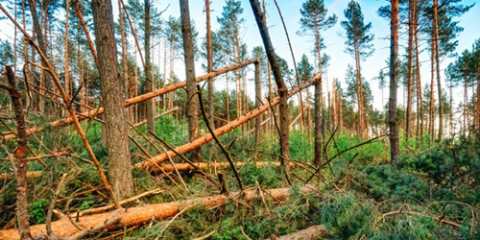
By David Shultz
When a cyclone named Klaus tore across southwestern France in January 2009, it highlighted a strange phenomenon: Trees, regardless of their diameter, height, or elastic properties, don’t tend to break until wind speeds reach about 42 m/s (94 mph). This seemingly odd convergence has actually been observed by several historical scientists, including Galileo and Leonardo da Vinci, both of whom suggested that a mathematical law could explain the resistance of wooden beams under stress. Now, using data from a new experiment, scientists say they have found that law. In a study published this week in Physical Review E, scientists hung weights from wooden rods and pieces of pencil lead to record the amount of force needed to snap the cylinder. As one might intuit, they found that for a fixed length, increasing the diameter made the rods stronger: They could bend more before breaking. This would make tall skinny trees most vulnerable, but, as the team points out, trees don’t grow taller without getting disproportionately thicker as well.
By incorporating established laws of tree allometry—which explain the relationship of tree size parameters such as diameter and height—the team was able to mathematically explain why the trees in Klaus’s path (like those seen above) gave way once the wind speeds reached 42 m/s. The equations show that changing the characteristics of the trees had meager effects: Doubling the size of a tree only increases the required wind speed by 9%; likewise, using wood more resistant to fracturing (oak versus pine) increased the critical wind speed by less than 10%. The scientists point out that their finding may reflect an optimization over evolutionary time, as wind speeds on Earth rarely exceed 50 m/s. The mathematical relationship could also explain how corals and other sedentary organisms grow in water currents.

